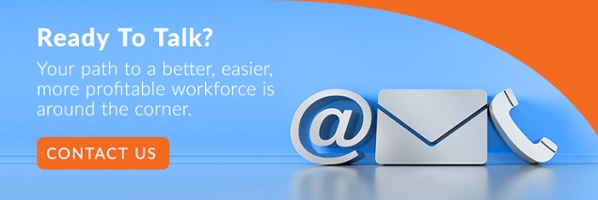The mere mention of a staff meeting is enough to cause both employer and employee to break out in a cold sweat. You probably don’t have to think back very far to remember the last unproductive meeting you attended. Ineffective staff meetings are a workplace epidemic. In fact, a 2012 survey of business professionals ranked meetings as the number one office productivity killer.
But do staff meetings have to be so painful? Of course not. With the correct mindset and necessary preparation, you can help your employees get excited about those previously dreaded staff meetings.
Here are seven fundamental concepts that will help you make the most out of your meetings:
Necessity. Before organizing a meeting, ask yourself if the meeting is really necessary. Consider the implications: if ten of your employees attend an hour-long meeting, your company loses ten hours of productive work time. Is this meeting worth the tradeoff? If not, see if there are things you can resolve by sending out an email or making a couple phone calls. If so, make sure to make it worth your employees’ valuable time.
Purpose. Every meeting needs a clear purpose. A meeting without a purpose is just a social gathering disguising as business. What is the purpose of your meeting? Is it to brainstorm solutions to a problem? Ratify a new policy? Boost company morale? Recognize employee accomplishments? Coordinate efforts between departments? Whatever the purpose, communicating it to your employees will help them understand why they’re there and what they’re supposed to be accomplishing.
Structure. Create an agenda for your meeting well in advance. Make sure agenda items are in line with the meeting’s purpose. If appropriate, consider sending the agenda out to the meeting’s participants beforehand so they can prepare accordingly. The agenda acts as a compass to help your meeting stay on task. If the meeting gets off track, having a set agenda can help you get back on course.
Leadership. Every good meeting is contingent upon good leadership. Good leadership is necessary to fulfilling your purpose and transforming great ideas into action plans. Make sure you're both physically and mentally present and that you've prepared sufficiently to direct (but not dominate) the meeting. If you decide to delegate, make sure that whoever is conducting the meeting is well-prepared beforehand to stick to the meeting’s purpose and agenda, encourage participation, and take charge when necessary.
Participation. Every meeting has those participants who tend to dominate the discussion. While these individuals may provide valuable input, other quieter individuals have valuable input as well. Do all you can to make sure everyone has a chance to participate in the meeting. If necessary and appropriate, help encourage your quieter team members to participate by giving them their own spot on the agenda. When everyone feels their input is heard and valued, they’re more likely find their attendance at the meeting to be valuable.
Timeliness. Nothing is more aggravating to your employees than a meeting that doesn’t start on time, except maybe for a meeting that doesn’t end on time. Starting on time shows your employees that the meeting is a priority for you. Ending on time shows your employees that you value their time and their contribution to your organization. Discipline your time to make sure you hit all your agenda items. If time is running out and important issues haven’t been resolved, make some assignments and schedule a follow-up meeting.
Action. Leave the last few minutes of your meeting to discuss what will happen next. Make sure everyone knows what their responsibilities are and the deadlines for fulfilling them. Send a follow-up email within 24 hours with a list of action items. When you set deadlines and delegate responsibilities, your team will be more productive and accountable.
Consider other creative ways you can help transform your staff meetings. Depending on the time and purpose of your meeting, consider including donuts, lunch, or another fun incentive to boost spirits. Try having a stand-up meeting. Research has suggested that people accomplish the same amount in 34% less time in stand-up meetings, not to mention the benefits to your employees' health. Maybe start each meeting with a staff spotlight or recognition. Whatever you decide to do, make sure it compliments and doesn't distract from the purpose of your meeting.
Do you have questions on how you can apply these principles to get the most out of your staff meetings? Contact one of our expert HR representatives at (888) 407-1032 and we’ll help you get on the road to smarter HR.



